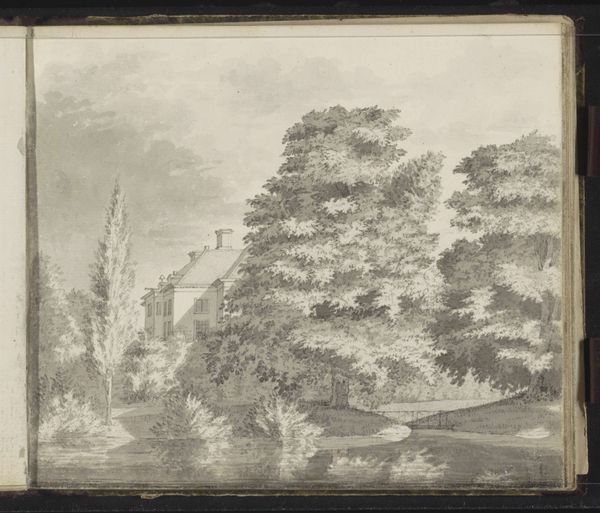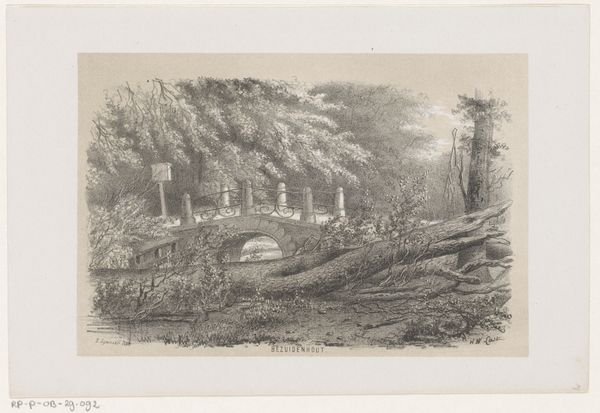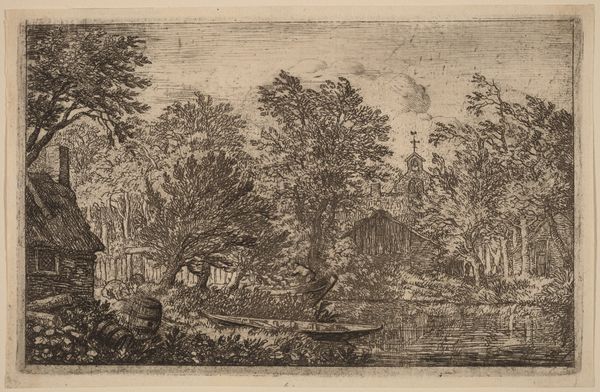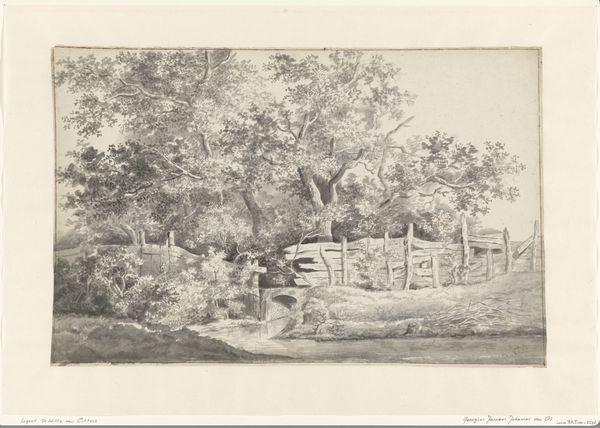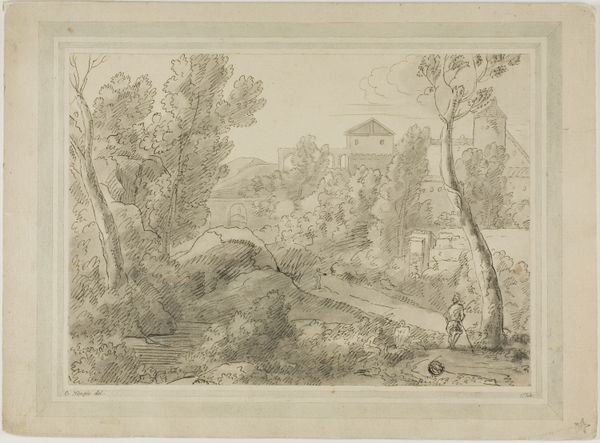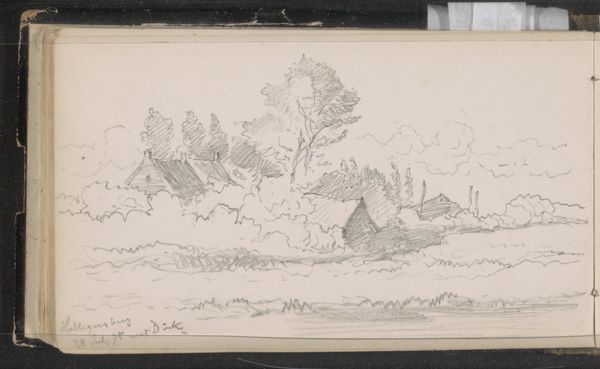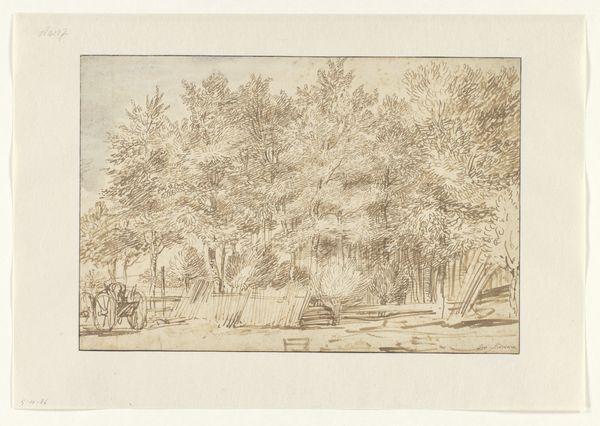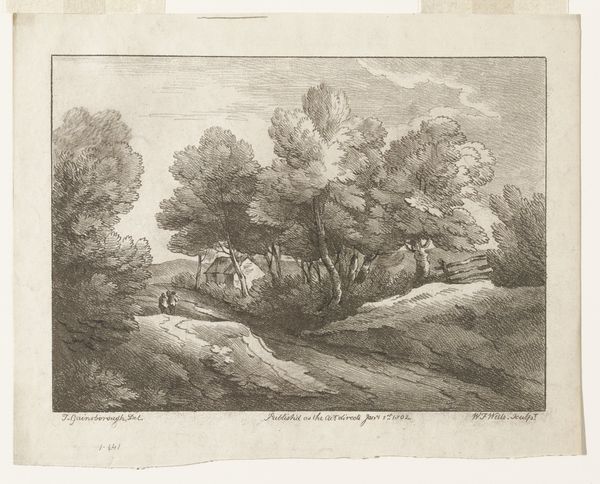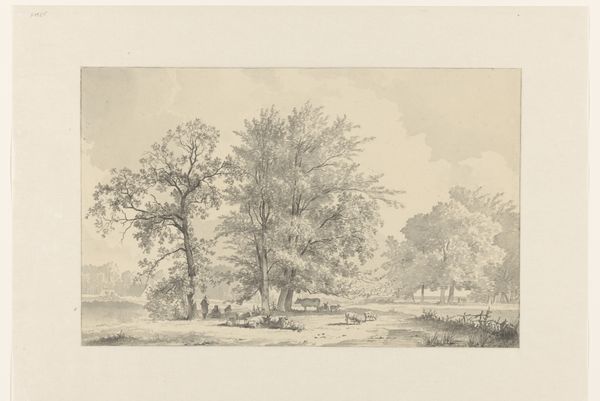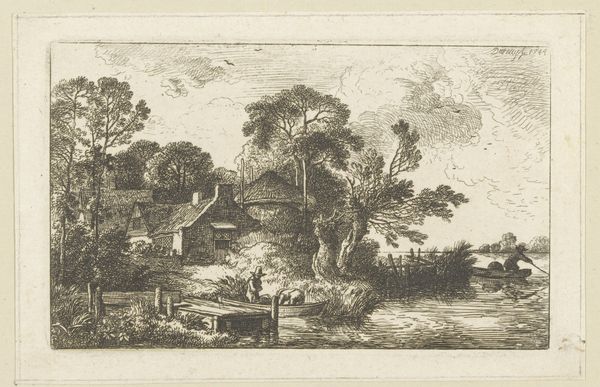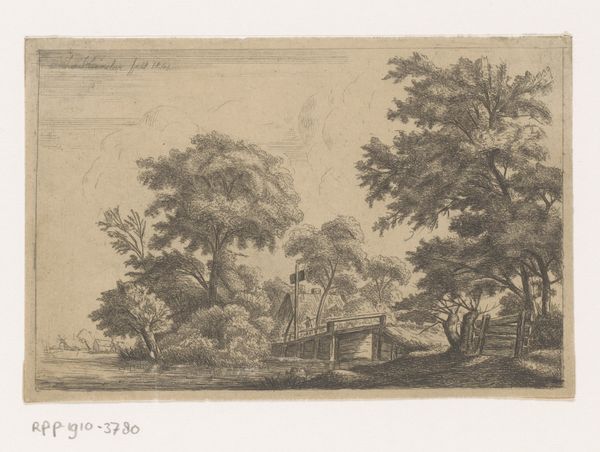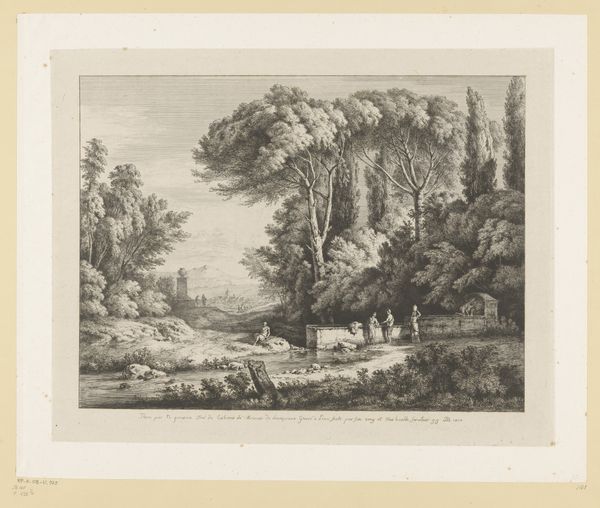
drawing, print, etching
#
drawing
# print
#
etching
#
landscape
#
romanticism
#
realism
Dimensions: Image: 5 1/4 × 7 7/8 in. (13.3 × 20 cm) Plate: 6 1/4 × 8 3/4 in. (15.8 × 22.2 cm) Sheet: 11 5/16 × 13 9/16 in. (28.7 × 34.4 cm)
Copyright: Public Domain
Editor: Here we have Charles-François Daubigny's "La Tonnelle" from 1838, an etching currently housed in the Metropolitan Museum of Art. It's such an intricately detailed print! What immediately strikes me is the almost photographic quality of the light and shadow. How do you approach an image like this? Curator: It is essential to appreciate the compositional balance first. Note how the thatched roof cottage on the left is counterweighted by the bulk of the large tree to the right. Observe the use of line. Daubigny manipulates the etched line to generate tonal variation. Do you see how he uses hatching to construct the illusion of depth and volume, particularly in the foliage? Editor: Yes, now that you mention it, I see how the density of lines creates areas of shadow, defining the forms. The tree trunk almost feels three-dimensional because of it! What does the placement of the cottage and tree tell us about the artist’s intent? Curator: Notice how they divide the pictorial space, directing the eye from foreground to background, guiding us to the implied space along the stream that recedes toward the center right, giving access to the tiny figures fishing mid-ground left and finally stopping at the far bank. Line, tone, and balance; these elements are composed carefully to encourage the reading of an almost ideal relationship. Editor: It's interesting how breaking down these components really enriches the experience of viewing. Thank you. I didn't fully grasp the relationship between each element until now. Curator: By considering the elements present, the art becomes clarified.
Comments
No comments
Be the first to comment and join the conversation on the ultimate creative platform.

